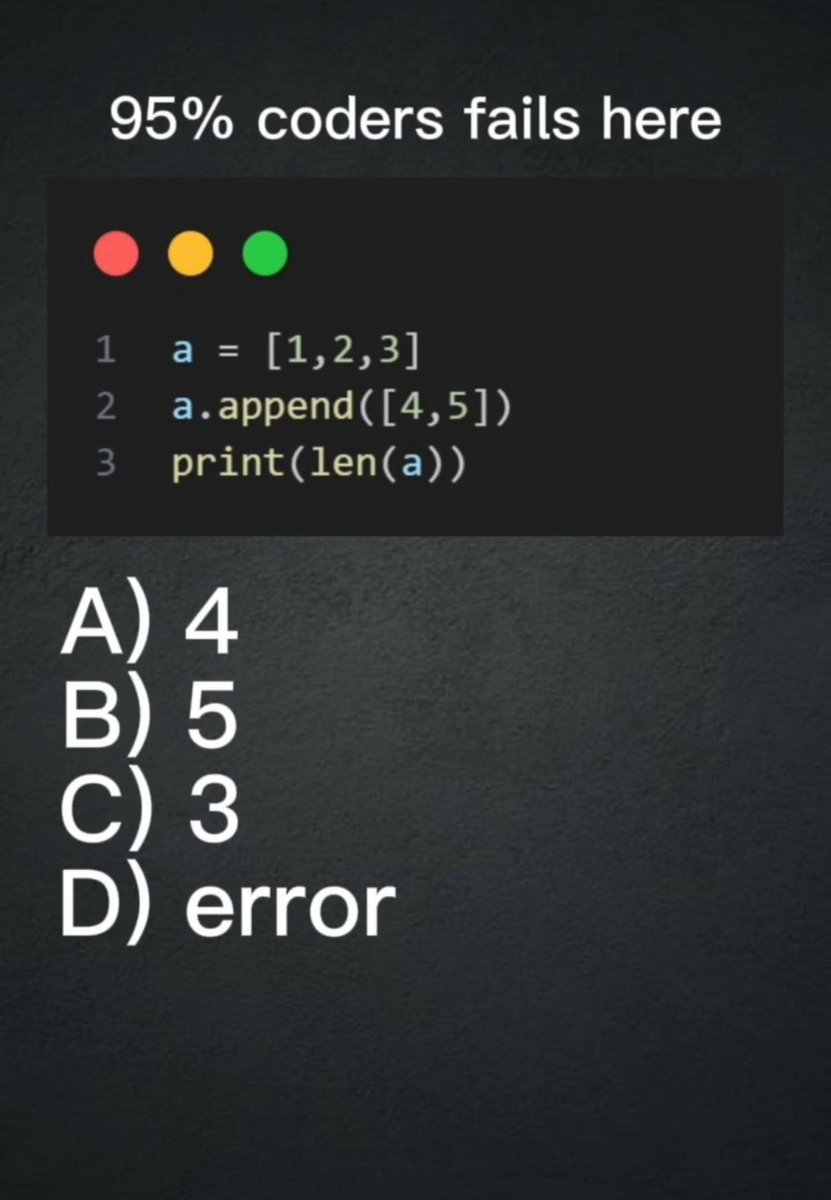Answer: A) 4 .append vs .extend trap! › a.append([4,5]) adds the LIST as ONE element › a becomes [1, 2, 3, [4, 5]] (nested list!) › length = 4 elements For beginners: append() adds as single item. extend() adds each element. Want [1,2,3,4,5]? Use a.extend([4,5]) not…
Stream, call, game, and work in even the most remote locations. Order online in minutes
Answer:-(A)4 The append() method adds one element to the end of a list, even if it’s another list, while extend() adds multiple elements from an iterable. For example, a.append([4,5]) gives [1,2,3,[4,5]], but a.extend([4,5]) gives [1,2,3,4,5].
I'm sorry, I don't have enough ram to run this so I can't test it out.
4, because the method append add all of the list [4,5] as one entity, making 'a' contain a nested list, resulting in just four (not) five as length
Welcome to Kinlaig! Get the new Highlands Fishing Expansion now.
The answer is A (4). The append method adds the new list as a singular object within `a`. So the new list is [1, 2, 3, [4, 5]].
1. The append function will add the list [4, 5 ] as a single item to the list [1, 2, 3] variable a. now becomes [1, 2, 3, [4, 5]] 3. The print statement will be print the length of the updated list 4. Answer is 4
The answer is 4 because you append a list so items are int, int, int, list.
United States 趋势
- 1. Bills 115K posts
- 2. Jonathan Taylor 20.7K posts
- 3. Falcons 31.3K posts
- 4. Colts 52.4K posts
- 5. Dolphins 20.1K posts
- 6. Henderson 7,485 posts
- 7. Diggs 7,057 posts
- 8. Browns 23.7K posts
- 9. Kyle Williams 5,387 posts
- 10. Daniel Jones 10K posts
- 11. Joe Brady 1,853 posts
- 12. Jaxson Dart 3,805 posts
- 13. Penix 11K posts
- 14. Dillon Gabriel 1,587 posts
- 15. Parker Washington 2,785 posts
- 16. Justin Fields 1,793 posts
- 17. #Bears 3,281 posts
- 18. Drake Maye 6,936 posts
- 19. Pats 9,046 posts
- 20. JJ McCarthy 1,701 posts
Something went wrong.
Something went wrong.








































